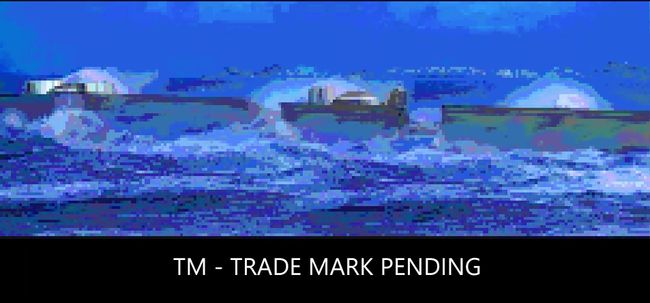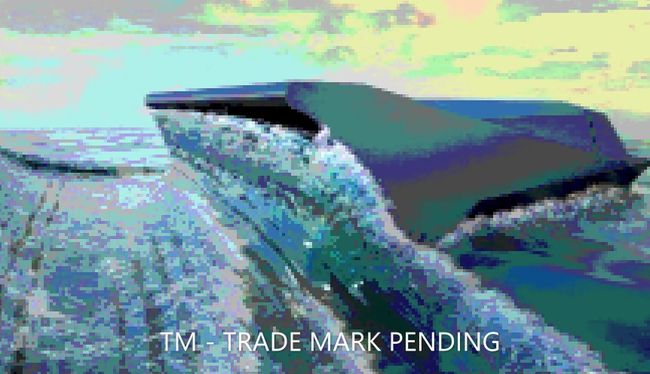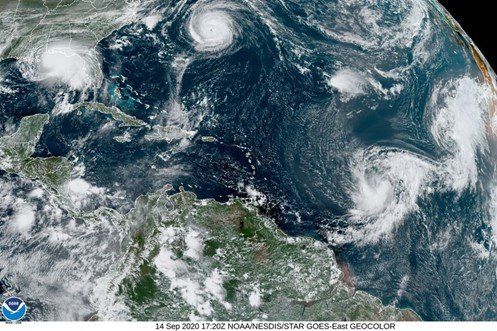Vision - Providing insightful maritime solutions to complex global environmental challenges with active climate impact resilience technologies.
Mission - To reduce the destructive nature of tropical cyclones by exploiting all the potential uses of Active Marine Barrier Systems.
Active Climate Impact Resilience
Ionian Pello Technologies Limited (IPTS Ltd.) is a UK based SME setup to commercialise several years of Research and Development creating an entirely new class of sea-going vessels, collectively named Active Marine Barrier System (AMBS).
These vessels, working either independently or collectively, use patented technology to provide localised protection from the devastating effects of storm surge waves routinely encountered during hurricane and typhoon seasons.
Developed to work alongside, or independent of, in-place sea defences, AMBS vessels have been engineered to transform sea-defence planning, reduce localised damage at sea, reduce storm surge wave impact in estuaries and coastline communities, and protect high value infrastructure along coastlines and waterways.
IPTS Ltd. is at the hub of an academic, business and end user consortium. This includes: academically, both Edinburgh and Strathclyde Universities in the UK and Texas A&M University in the US; from business and potential supply chain with commercial maritime partners to demonstrate and Prototype AMBS vessels. In terms of potential end users, IPTS Ltd. is liaising with the USA Corps of Engineers on the utility of AMBS with the current planning for the estimated $26Bn Texas Coastal Spine Protection Project.
IPTS Ltd. intends to produce AMBS in a multinational partnership, ultimately to provide licenses for the vessels to be built and operated in compliance with universal classification society regulations and US Jones Act. AMBS vessel design is modular providing Large Scale Modular (LSM) build opportunities to both the UK, Europe, the US, and across the Far East.
Why the need for Active Marine Barrier System?
The case linking warmer oceans to an increase in frequency, intensity and size of both hurricanes and typhoons has been well made. All evidence points to a future of stronger and more frequent storms.
2020 was the most active year in history, with 30 named storms in the Atlantic Hurricane season alone; a similar situation emerged across the Pacific Typhoon region. At the time of Hurricane Katrina (2005), historical data predicted such an occurrence would be unlikely for another 100 years. Since then, due to the change in global weather patterns, some estimates predict a return as soon as 20 years.
Tropical cyclones and major storms occur across the globe.
Surprisingly, the cause of most damage in a tropical storm is not wind but water and in particular the storm wave impact loading and overtopping caused by storm-surge waves flowing over the tops of the most vulnerable areas of fixed in-place defences. "Of the 32 largest cities in the world, 22 are located on estuaries" Ross, D. A. (1995). Introduction to Oceanography.
New York: Harper Collins College Published ISBN 978-0-673-46938-0.
What can actually be done to address and mitigate storm-surge wave risk?
Thus far the principal approach has been to build infrastructure (generally sea walls) and optimize the use of lagoons and wetlands to absorb as much storm energy and water inundation as possible. The design of sea-defences routinely depends on historic and predicted data. Oftentimes barrier systems include sophisticated gate structures such as the Thames Barrier in London UK.
Inventor Robert Gordon, in collaboration with Cambridge, Napier and Strathclyde universities; HR Wallingford (hydraulic coastal defence engineers), UK and German based naval architects, and safety experts from the International Maritime Organisation has over the past 10 years developed and internationally patented the Active Marine Barrier Systems (AMBS).
AMBS reduces the effect of storm surge wave impacts.
AMBS consists of a totally new class autonomous special purpose ship designed to be positionally flexible to meet the impact of each storm regardless of its path, AMBS are dynamically manoeuvrable to maintain an optimal position as each storm passes through vulnerable coastline or estuary areas. AMBS can be pre-positioned to protect high value sites such as nuclear power stations, port openings, unprotected water thoroughfares or vulnerable points on fixed in-place defences.
Our purpose with AMBS is to protect lives, livelihoods of those who live in areas affected by tropical cyclones and coastal critical infrastructure.




